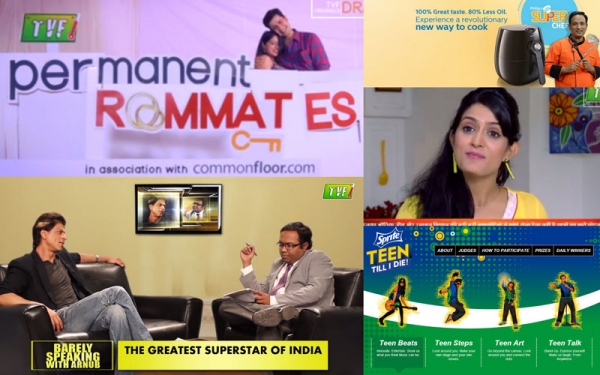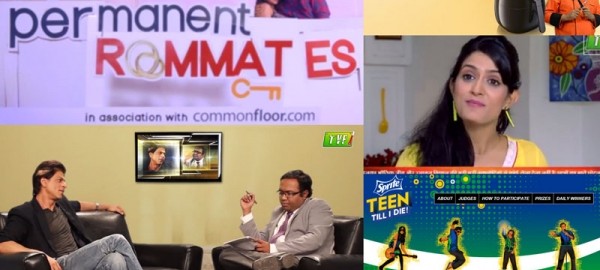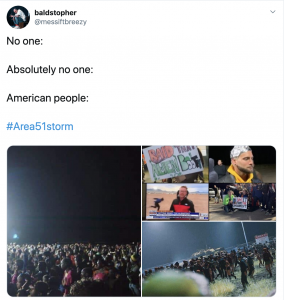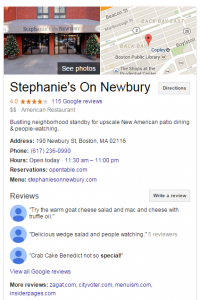By Vinaya Naidu, Published November 14, 2014

Advertising, as we know of, is undergoing a massive transformation with the advent of social media. Having discovered a new medium to add to their marketing mix, brands began pushing one-way messages that worked in traditional media, but didn’t quite fit well into the new two-way mode of social media. But, that was the beginning and brands gradually understood this new monster called social media.
The next few years saw them experimenting in innovative ways to engage their community, be it with the tried and tested contests on Facebook and Twitter or a longer drawn community building campaign. Content focused less on the brand and more on stories that audiences connected to.
This year, brands have mainly focused on innovative storytelling campaigns. By increasingly adopting storytelling to engage their audiences, brands began creating memorable associations while enhancing brand values and establishing the brand purpose.
There isn’t a doubt that storytelling is the future of digital marketing, but the narration would define its success. The channels for telling your stories need to be in sync to appeal to the new age millenials. The stories need to be in a consumable format for the average social media savvy youth, if brands need to truly reach out to the digital masses.
See also: Why storytelling is the future of digital marketing.
The age of ‘Branded Content’
One of the ways brands are indulging in is ‘branded content’. While the content serves to entertain digital audiences, especially the youth, it also helps retain the essence of the brand. And brands are choosing to bank on the most popular digital communities.
Of late, real estate portal CommonFloor.com partnered with The Viral Fever (TVF) Media Labs, a new age media company, to create a series of six web-episodes for a web only fiction series called ‘Permanent Roommates’.
With an average length of 15 minutes per webisode, the first two webisodes released weeks apart, have garnered more than 3 lakh and 4 lakh views respectively. The storyline in the webisodes named ‘The Proposal’ and ‘The Father (in-law) features how CommonFloor plays a role in the lives of a young couple. While being entertaining with a strong humour quotient, the webisodes are also taking the viewer through the various features of CommonFloor.
The Viral Fever has 800K+ subscribers with over 63 million+ combined views. Gaining fame with the Rowdies video, its parody on the popular MTV reality show Roadies that got a million views within the first week itself, TVF went on to create more parodies as branded content through Qtiyapa, its vertical for humour content.
‘Gaana Wala Song’, a parody of the song Ishq Wala Love and ’100 crore ka Qtiyapa’, where the writers pitch the idea of creating a 100 crore romance film to Anurag Kashyap, were actually promotional videos for the films ‘Student of the Year’ and ‘Shorts’.
When actor-producer Shah Rukh Khan wanted to promote his movie ‘Happy New Year’ to the digital audience, he chose TVF’s new web series ‘Barely Speaking with Arnub’, a parody interview by an actor spoofing Times Now NewsHour journalist Arnab Goswami. In typical Arnab style of grilling his guests at the news channel’s prime time debate, Arnub, the fake Arnab takes potshots at SRK making for a hilarious watch for the viewers.
The 14-minute video featuring the star quickly went viral to gain over 1.9 million views till date.
Brand message delivered
General insurance brand, Bajaj Allianz recently collaborated with TVF for a unique funny video, the lyrics of which were crowdsourced from tweets and Facebook posts reflecting real life incidents. As part of the ‘Maanta Nahi’ campaign where the brand wanted to send across its message – ‘We listen to you’, the video or rather the ‘Maantha nahi anthem’ has crossed over a million views.
Cashback and coupons website, Cashkaro.com also partnered with TVF to make a two part video spoof on a popular TV show CID. The story ‘Qissa Missing Dimaag Ka’ featured the main protagonist referring to Cashkaro benefits in between the plot. Both videos have fetched a combined million plus views.
When Philips wanted to build awareness for its Airfryer, it teamed up with Sanjay Thumma, popularly known as ‘Vah Chef’, a top YouTube food influencer with over 350K subscribers and 200 million combined views. A branded cookery show called the ‘Philips Superchef’ will see him showcasing Airfryer recipes and highlighting the benefits of Airfryer over 24 episodes.
Popular youth entertainment channel, MTV India has been leveraging branded content since some time now. This year it launched the second season of CEAT MTV Chase The Monsoon, with two more digital shows – Philips MTV Bachelor Pad and MTV The look, both of which will have Philips products seamlessly woven into the plot.
Ahead of the launch of Ford Ecosport last year, the automobile maker had launched the ‘Urban Disoveries’ campaign. Pitching the Ecosport as an urban SUV, it invited people to write about little-known destinations in their cities. Winners of the contest were given an Ecosport to drive and make a film on those destinations. The campaign generated over 200 videos for the Ecosport.
Sprite, the lemon flavoured soft drink from Coca-Cola had launched the “Teen Till I Die” initiative where it invited youngsters to sing, dance or perform a stand-up comic act and post their videos online. The campaign got Coca-Cola over 5.2 million video views.
Seamless brand integration
Branded content isn’t as intrusive as advertisements; it is also lucrative for both the brand as well as the content creator and publisher. So while it is a win-win for both parties, does the audience opinion really matter, specially in this age of millenials and socially connected consumers that do not bat an eyelid to show their disapproval?
Given the many dislikes on the TVF videos and the number of negative comments for the publisher, one may deduce that branded content may have a short shelf life, even if its a brand favourite now. However, the ratio of likes to dislikes is so low that we can safely deduce branded content as the future of digital marketing. One way or the other, brands can reach out to their target audiences and send their messages through seamless integration with entertainment and popular culture. The viral views gained by these videos are a sureshot indicator to their success.
Reaching out to right TG
For most brands, be it in the FMCG, food & beverages, movies and entertainment or banking and insurance, the target audience is the youth and they don’t watch soap operas or general entertainment channels on TV. The youth today are digitally tech savvy and social media savvy with a preference for new age content like funny memes and videos. They look out for content pieces that go viral on social media and images, memes, videos that are worth sharing with their social connections.
A 2013 study on the Indian smartphone user behaviour by Neilson revealed that Indians are more inclined towards multimedia and spent nearly 33 minutes daily on entertainment. These are encouraging numbers despite high data plans and slow connectivity in the country. With Digital India program in progress, a proliferation of mid-segment smartphones, internet infrastructure upgrade in the country, brands have a lot on their plates to get prepared for when it comes to marketing in the digital age.
Branded content, if done seamlessly, can serve as the most engaging advertisement ever.
Business Articles | Business 2 Community
(301)
Report Post






